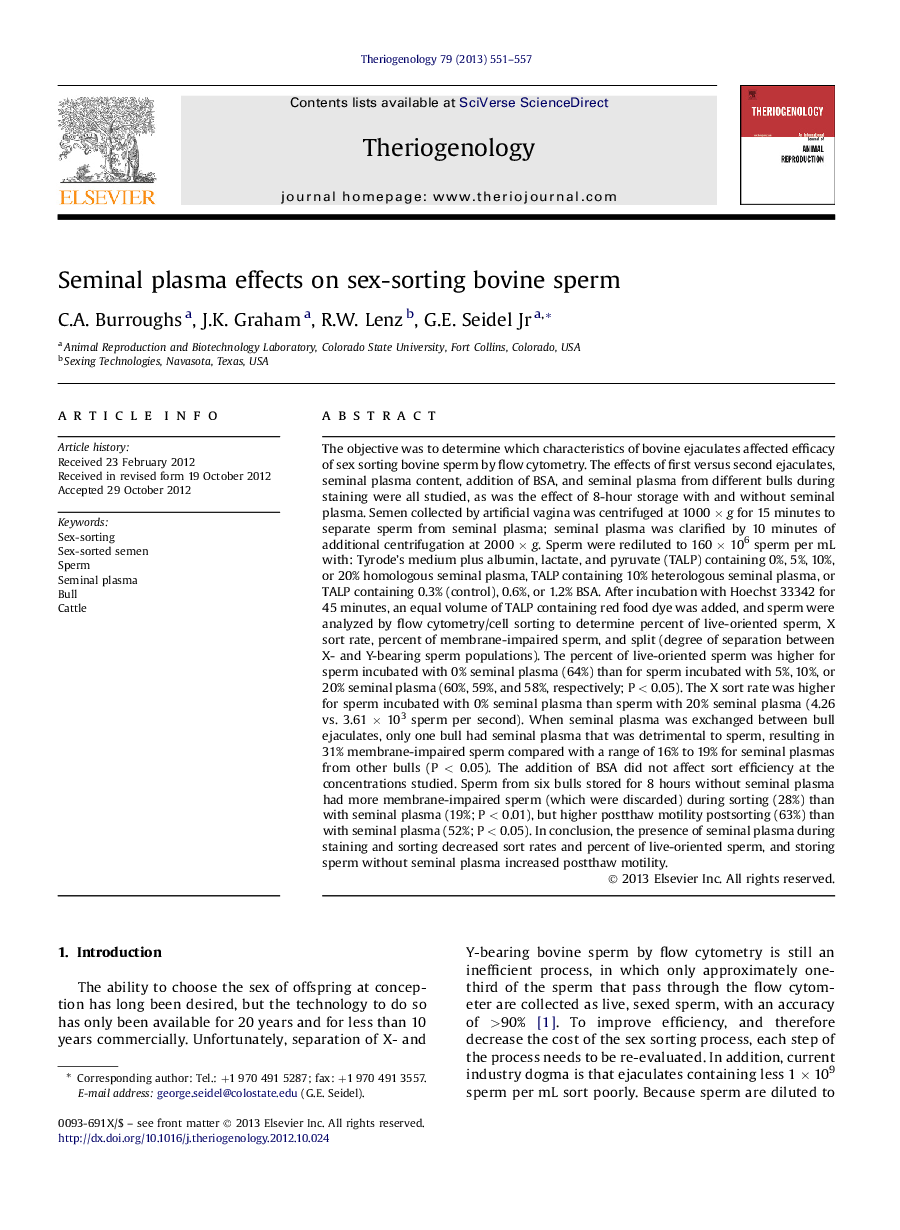| Article ID | Journal | Published Year | Pages | File Type |
|---|---|---|---|---|
| 10892103 | Theriogenology | 2013 | 7 Pages |
Abstract
The objective was to determine which characteristics of bovine ejaculates affected efficacy of sex sorting bovine sperm by flow cytometry. The effects of first versus second ejaculates, seminal plasma content, addition of BSA, and seminal plasma from different bulls during staining were all studied, as was the effect of 8-hour storage with and without seminal plasma. Semen collected by artificial vagina was centrifuged at 1000 Ã g for 15 minutes to separate sperm from seminal plasma; seminal plasma was clarified by 10 minutes of additional centrifugation at 2000 Ã g. Sperm were rediluted to 160 Ã 106 sperm per mL with: Tyrode's medium plus albumin, lactate, and pyruvate (TALP) containing 0%, 5%, 10%, or 20% homologous seminal plasma, TALP containing 10% heterologous seminal plasma, or TALP containing 0.3% (control), 0.6%, or 1.2% BSA. After incubation with Hoechst 33342 for 45 minutes, an equal volume of TALP containing red food dye was added, and sperm were analyzed by flow cytometry/cell sorting to determine percent of live-oriented sperm, X sort rate, percent of membrane-impaired sperm, and split (degree of separation between X- and Y-bearing sperm populations). The percent of live-oriented sperm was higher for sperm incubated with 0% seminal plasma (64%) than for sperm incubated with 5%, 10%, or 20% seminal plasma (60%, 59%, and 58%, respectively; P < 0.05). The X sort rate was higher for sperm incubated with 0% seminal plasma than sperm with 20% seminal plasma (4.26 vs. 3.61 Ã 103 sperm per second). When seminal plasma was exchanged between bull ejaculates, only one bull had seminal plasma that was detrimental to sperm, resulting in 31% membrane-impaired sperm compared with a range of 16% to 19% for seminal plasmas from other bulls (P < 0.05). The addition of BSA did not affect sort efficiency at the concentrations studied. Sperm from six bulls stored for 8 hours without seminal plasma had more membrane-impaired sperm (which were discarded) during sorting (28%) than with seminal plasma (19%; P < 0.01), but higher postthaw motility postsorting (63%) than with seminal plasma (52%; P < 0.05). In conclusion, the presence of seminal plasma during staining and sorting decreased sort rates and percent of live-oriented sperm, and storing sperm without seminal plasma increased postthaw motility.
Related Topics
Life Sciences
Agricultural and Biological Sciences
Animal Science and Zoology
Authors
C.A. Burroughs, J.K. Graham, R.W. Lenz, G.E. Jr.,
